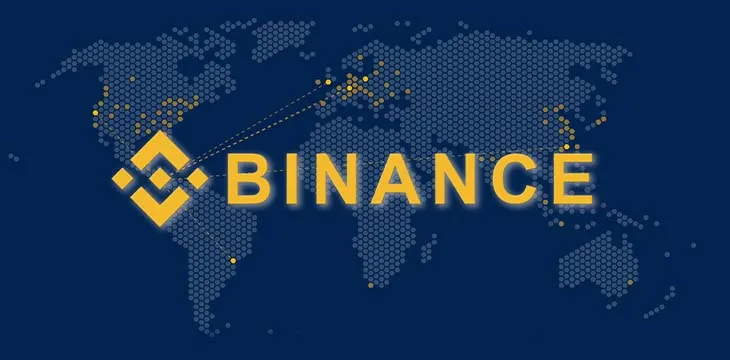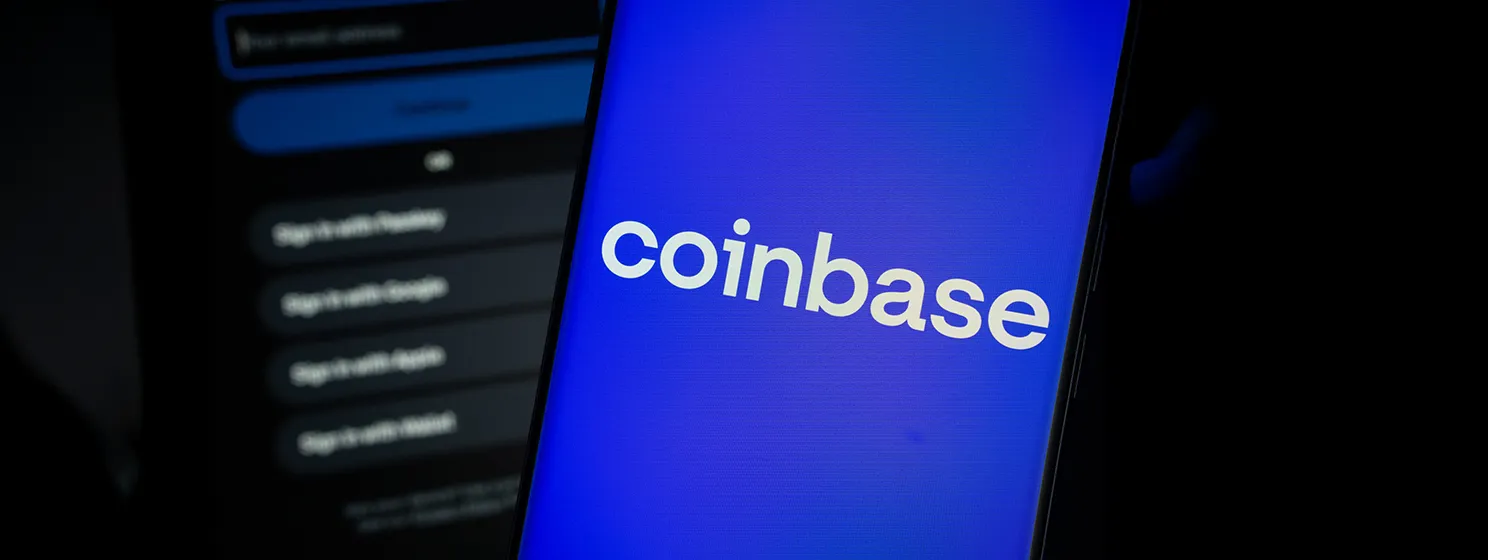|
Getting your Trinity Audio player ready...
|
Binance’s CEO is trying to curb a massive outflow of assets as the digital exchange’s name gets dragged through the mud on Capitol Hill.
On Wednesday, the U.S. Senate Committee on Banking, Housing and Urban Affairs held a hearing into the collapse of the FTX exchange, whose former CEO Sam Bankman-Fried was arrested Monday on fraud and money laundering charges. The hearing followed Tuesday’s hearing by the House of Representatives Financial Services Committee, part of Washington’s frantic efforts to appear as if they’re on top of this debacle.
Among those testifying before the Senate committee was Kevin ‘Mr. Wonderful’ O’Leary, who collected $15 million as an FTX pitchman before the exchange filed for bankruptcy protection last month. Ever since, O’Leary has been on something of a martyrdom tour, trying to portray himself as just another victim of SBF’s duplicity.
Whoa!!! @kevinolearytv throwing punches at @cz_binance in congress! pic.twitter.com/OsWuTvtxR3
— Ran Neuner (@cryptomanran) December 14, 2022
Mr. Blunderful told the committee that he’d had a post-bankruptcy chat with SBF in which the former CEO explained the origin of FTX’s woes. SBF told O’Leary that the dam began to break when FTX was forced to redeem the roughly 20% stake in FTX that was held by Binance CEO Changpeng ‘CZ’ Zhao. That 2021 redemption was reportedly sparked by the regulator-phobic CZ’s unwillingness to supply FTX with the ‘source of funds’ information sought by jurisdictions in which FTX was seeking operating licenses.
FTX’s problems accelerated rapidly after the leak of a balance sheet of the SBF-controlled market-maker Alameda Research showing an unhealthy reliance on FTX’s in-house token FTT. CZ publicly vowed to dump the over half-billion worth of FTT that he received as part of that 2021 buyout, a threat that convinced many FTX customers to request the immediate withdrawal of their assets from the exchange. FTX didn’t have the cash and the rest is history.
As part of Binance’s exit from FTX equity last year, Binance received roughly $2.1 billion USD equivalent in cash (BUSD and FTT). Due to recent revelations that have came to light, we have decided to liquidate any remaining FTT on our books. 1/4
— CZ 🔶 BNB (@cz_binance) November 6, 2022
O’Leary characterized FTX and Binance as “two behemoths that owned the unregulated market” for digital asset exchanges and “were at war with each other and one put the other out of business—intentionally.” But in O’Leary’s view, the more worrying result of FTX’s implosion is that Binance is now “a massive, unregulated, global monopoly” at the heart of the centralized exchange sector.
Too big to flail
Whether or not you believe that CZ threatened to dump his FTT for the express purpose of pushing the already shaky FTX over the edge, there is no doubt that CZ has since issued tweets that suggested fiscal skeletons lurking in the closets of rival exchanges, including Coinbase (NASDAQ: COIN), Kraken and Kucoin, only to delete those tweets shortly thereafter.
It’s perhaps ironic that CZ, who routinely dismisses reports of Binance-related underhanded dealings and criminality as FUD (fear, uncertainty and doubt), would appear so eager to throw mud at other exchanges. Then again, given the ease with which his tweet popped FTX’s balloon, he may be so drunk with power that he thinks he can destroy other, more solvent exchanges in the same fashion.
But CZ’s attempts to elevate Binance by diminishing its rivals appears to have backfired. Binance recently endured record outflows of digital assets from the exchange, as customers spooked by CZ’s fearmongering made no distinction between Binance and any other crypto crooks. As of Wednesday afternoon, DefiLlama data showed a net outflow of $5.7 billion over the previous seven days, with nearly $2 billion leaving in just one day.
Customers were further spooked by reports that Binance had halted all withdrawals of Circle’s USDC stablecoin for 24 hours, something CZ blamed on banks in New York being closed. Not all users were pacified by CZ’s half-baked reassurance that “We expect the situation will be restored when the banks open.” (Emphasis added.}
On USDC, we have seen an increase in withdrawals. However, the channel to swap from PAX/BUSD to USDC requires going through a bank in NY in USD. The banks are not open for another few hours. We expect the situation will be restored when the banks open. 1/2
— CZ 🔶 BNB (@cz_binance) December 13, 2022
Some of CZ’s followers pointed out that bank closures were cited by FTX as the reason it couldn’t process any stablecoin redemptions just days before FTX declared bankruptcy. The suspicion that Binance might be experiencing its own ‘run on the bank’ appears to have helped fuel this recent net outflow tsunami.
CZ did offer users the ability to withdraw stablecoins other than USDC, specifically citing Binance’s own BUSD and the Tether ‘stablecon.’ Binance recently announced a program to forcibly convert its customers’ USDC to BUSD but the growing realization that Binance holds two types of BUSD—the one issued by Paxos and regulated by U.S. authorities, and the one issued by Binance and regulated by Binance—may have contributed to customers’ fears that they’d soon be holding tokens as worthless as FTX’s FTT.
Tell me nothing
Conscious of the gathering storm, CZ took part in a Binance-hosted ‘Ask Me Anything’ session on Wednesday. Responding to a question regarding the recent withdrawals, CZ insisted that “there’s no amount of withdrawals that will put us under pressure” due to Binance’s alleged overcapitalization. The market is currently “quite edgy” due to the publicity surrounding FTX but CZ insisted that Binance is now “seeing the money flow back” into the exchange.
In a thinly veiled warning to his hordes of withdrawing customers, CZ declared that “99% of people” who choose to self-custody their digital assets rather than delegate that task to centralized exchanges like Binance “will end up losing it.”
Translation: stop withdrawing your money, people. It doesn’t matter if Binance ends up stealing it since you’d only lose the seed phrase to your cold wallet. And you’re causing us no end of bother by coming up with creative excuses for why we won’t let you have your money.
It’s worth remembering that this is the same CZ who, only a month ago, was preaching self-custody as “a fundamental human right.” Makes one wonder what existential threats may have arisen over the past month to compel such a dramatic about-face.
Prior to the AMA, Bloomberg reported that CZ had informed Binance staff to expect a “bumpy” ride over the next few months. The bumps would partly consist of “a lot of extra scrutiny and tough questions” regarding the exchange’s operations. ‘Why can’t you give us our money’ will likely be one of the more popular queries.
Nobody puts Tether in the corner
Other questions will likely center on the recent revelation that CZ, along with SBF, Kraken’s Jesse Powell, Tron’s Justin Sun and Tether CTO Paolo Ardoino, are/were part of a group chat on the Signal private messenger app called ‘Exchange coordination.’ The name—not unlike FTX’s ‘Wirefraud’ group chat—appears to confirm much of what the broader market has long suspected regarding collusion, market manipulation and anti-competitive behavior.
More details of this Exchange chat group were revealed in the prepared testimony SBF planned to give the House Financial Services Committee before he was arrested. Screenshots provided by SBF appear to confirm a Wall Street Journal report that Ardoino was concerned that SBF was trying to short Tether in a bid to raise some desperately needed cash. CZ warned SBF to stop these efforts, leading SBF to ask whether CZ really believed that the alleged $250,000 short position was sufficient to depeg Tether from its 1:1 ratio with the U.S. dollar.
CZ denied that such a small position was capable of depegging Tether, only that it would cause “small issues here and there, and more work for market makers, etc.” CZ then suggested expelling SBF from the chat so that the others could “see how we best work together to help stabilize and restore confidence to the market.”
Concerns that a $250,000 short position poses a real threat to Tether, which currently boasts a market cap of nearly $66 billion, does indeed appear far-fetched. That is, unless the assets underpinning Tether’s reserves—which have undergone even less scrutiny than Binance’s—aren’t all that they seem. And since Binance is one of the largest recipients of Tether, CZ might know more than he’s letting on about how shaky crypto’s house of marked cards actually is.
Rhymes with ‘sleazy’
CZ’s complaints that Binance is being unfairly targeted by FUD would carry a lot more weight if he wasn’t such an inveterate liar. For instance, during Wednesday’s AMA, CZ memory-holed his recent Twitter smears against his exchange rivals, declaring that he and Binance “never really attack other industry players.”
When one listener asked if CZ would ever agree to travel to Washington, D.C. to offer testimony to a congressional committee, CZ said: “I try not to go to the U.S. so that Binance.com would not be seen as soliciting users from the U.S. … I’m also quite busy visiting many other countries … I’m not against traveling to the U.S. … but I’m busy with other priorities.”
Even on this front, it seems CZ can’t get his messaging straight. Patrick Hillmann, Binance’s Chief Strategy Officer, responded to a Twitter query regarding CZ’s U.S. travel habits by saying CZ did travel to the States “but it’s not publicized as he is the CEO and chief spokesperson of Binance.COM and we can’t market to U.S. users.”
Regardless, once his U.S. travel whopper was uttered, CZ seemingly couldn’t stop, going on to claim that the U.S.-based Binance.US “is an independent company … I’m the chairman of the board but I’m not involved in the day-to-day operations of Binance.US. They use Slack for internal communications. I don’t even have Slack installed on my phone. So I’m not involved in the day-to-day operations there at all.”
This is, as Reuters reported in October, complete and utter bullshit. BAM Trading, the company with which Binance ‘partnered’ to run Binance.US, is owned by none other than CZ. (We hope CZ drove a tough bargain in the negotiations that preceded that partnership.) This strategy of pretending he is not involved in anything to do with Binance.US sounds a lot like SBF saying he had nothing to do with Alameda Research.
Reuters also reported on internal communications involving Binance execs in which Binance.US was referred to as a “de facto subsidiary” with CZ directing its management from abroad. In the wake of Brian Brooks resigning as Binance.US CEO in August 2021 after only three months on the job, CZ appointed a new CEO who pushed staff to register users quickly and without performing adequate know-your-customer (KYC) checks. Four Binance.US staffers told Reuters that nearly half the compliance team quit by mid-2022 due to this pressure.
Previous reports exposed CZ’s plan to establish Binance.US as a regulatory lightning rod that would draw attention away from the even wilder shenanigans going on at Binance.com (including the fact that U.S. customers were still accessing the international site in direct contradiction with CZ’s public pronouncements). So far, CZ’s plan doesn’t appear to be working.
Stop. Just stop.
CZ loves to gaslight the media by claiming that Binance loves regulation like Cookie Monster loves Oreos, even as the company actively conspires to evade any and all regulatory scrutiny. So we can’t wait to see how CZ spins Wednesday’s news that the Australian Communications and Media Authority (ACMA) has imposed a AU$2 million (U.S.$1.37 million) penalty on Investbybit Pty Ltd aka Binance Australia.
According to the ACMA, Binance sent over 5.7 million spam emails to Australian residents between October 2021 and May 2022, including to recipients who hadn’t consented to receiving such communications. The emails either didn’t contain a way for customers to unsubscribe or made that process onerous, including by requiring them to log into their account to unsubscribe—and hey, if they decide to make a commission-based trade while they’re logged in, all the better.
Australia’s Spam Act has been in effect since 2003, so it’s not like Binance would have been unaware of it. The ACMA sent Binance five separate notices that they were in violation of the Spam Act yet the exchange failed to take the necessary action to bring themselves into compliance.
Probably because CZ said ‘fud it.’
Follow CoinGeek’s Crypto Crime Cartel series, which delves into the stream of groups—from BitMEX to Binance, Bitcoin.com, Blockstream, ShapeShift, Coinbase, Ripple,
Ethereum, FTX and Tether—who have co-opted the digital asset revolution and turned the industry into a minefield for naïve (and even experienced) players in the market.

 05-10-2025
05-10-2025 





